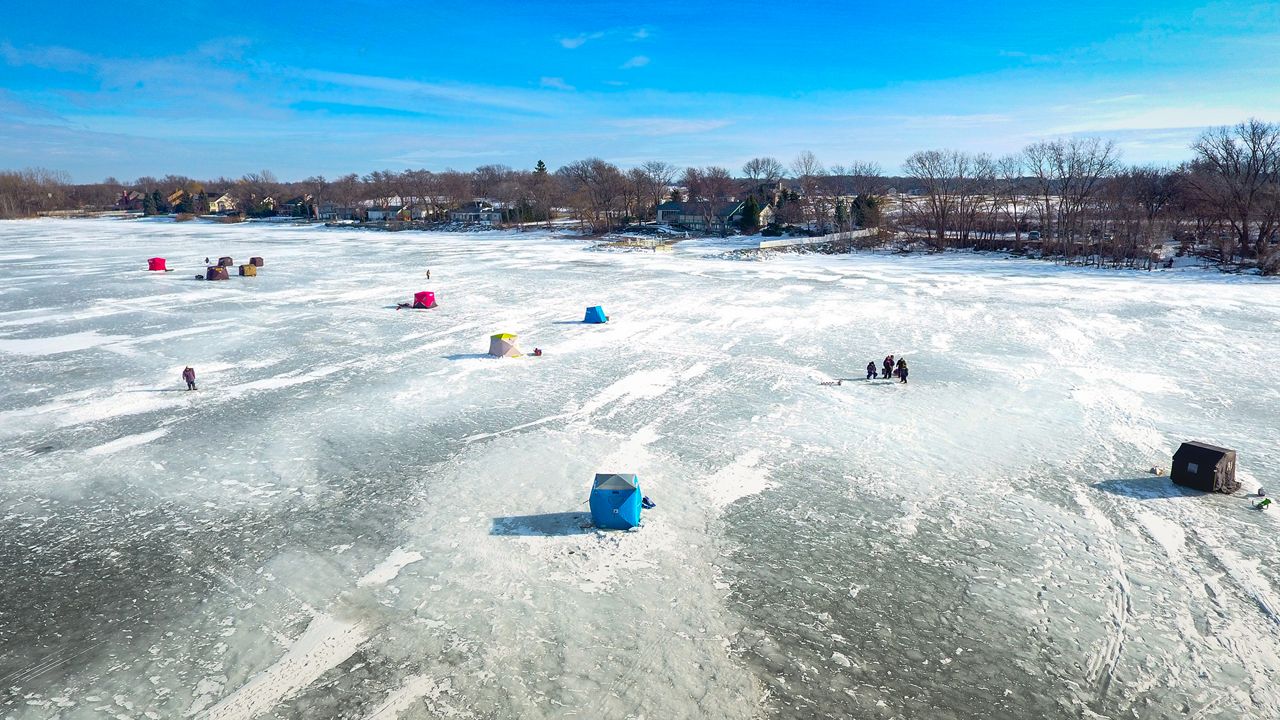It has been a mild winter here in Rochester and the Finger Lakes. While some of the ponds and smallest lakes have iced up a bit, most have remained ice-free.
Colder weather has settled in, and it may stick around for a while, but there is still a lot of debate on that heading into February. So as the ice develops on your favorite watering hole, please use caution!
What You Need To Know
- No ice is 100% safe to venture out on
- Clear ice is stronger than white ice
- Check the ice depth with a chipper as you go
- Pay attention to the temperature and wind when on ice
Whether it is a pick-up game of hockey, ice fishing, or enjoying your snowmobile, one needs to respect the ice thickness, ice type, and weather conditions.
Here is a basic chart of needed ice thickness for various activities. The weight of what you are in or on is a key factor.
Clear ice is ice that has little to no air trapped within it. This makes the ice denser and, therefore, stronger. Clear ice also takes longer to melt.
In contrast, white ice is ice that has air or other gasses trapped within its structure. This makes the ice less dense and susceptible to cracking. It also melts faster.
Air temperature is a big factor. Above freezing temperatures, ice melts. Below freezing temperatures, it thickens.
However, many don't often take into account the wind. Even on a bitterly cold day when you think you're safe on the ice, the wind can break up the ice or take you with it out to sea.

Remember, when venturing out on the ice, you should have a chipper. A chipper is a long pole with a metal end. Slowly work from shore and chip the ice ahead of you. For the average adult, you want to have 4 inches of solid, clear ice.
Get out and enjoy your winter weather activity, but make sure the ice is thick and safe.



